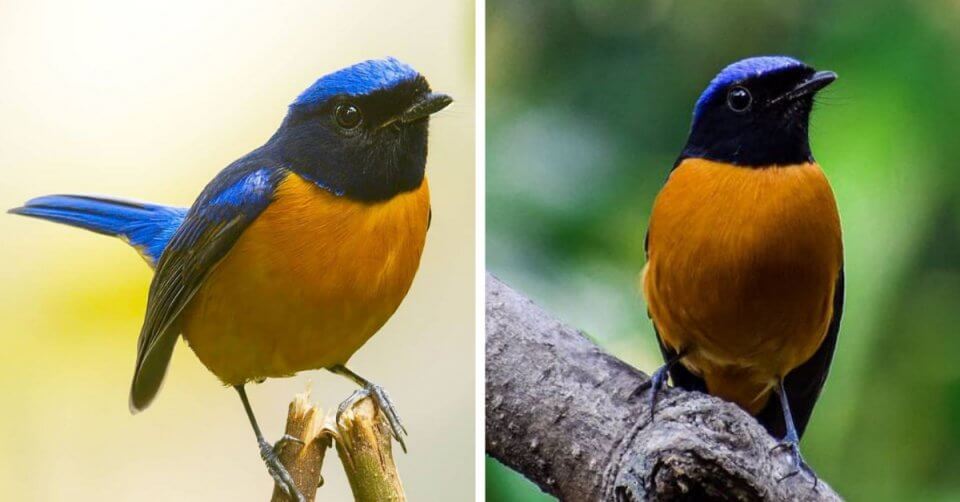ONE OF THE THINGS THAT DRAW MANY OF US TO THE WORLD OF BIRDS IS THE SHEER BEAUTY AND VARIETY OF COLORS.

The countless hues and combinations many birds possess can be surprisingly beautiful. One bird carry’s that ‘sheer beauty’ label with ease with its stunning combination of electric blue and orange plumage.
MEET THE RUFOUS-BELLIED NILTAVA

Photo Courtesy of shrikant rao / CC BY 2.0
Males of this species are colored a bright blue with an electric orange belly. While the females tend to be more of a dull brown hue with a white patch on their throat.

Photo Courtesy of Jason Thompson / CC BY 2.0
First described in detail by Brian Hodgson in 1837, this bird is also known as the blue-and-orange niltava and the black-and-orange niltava.

Photo Courtesy of Picuki/@travelwithtoppo
This bird’s range starts in Pakistan before hitting the Himalayas down through India, Nepal, Bhutan, Myanmar, Thailand, and Laos.

Photo Courtesy of Soumyadeep Chatterjee / CC BY 2.0
Rufous-bellied Niltava’s like to live in the bushy undergrowth in tropical or moist temperate forests, feeding on insects or fruit.

Photo Courtesy of Francesco Veronesi / CC BY 2.0
The shiny blue plumage on the male of the species is thought to be due to a mix of dark melanin pigment and light scattering. Their call is described as a high metallic whistle.

Photo Courtesy of Picuki/@arorayuvraj
When sunlight hits his upper blue feathers, it scatters, leaving this shade of blue, just in the same way we see the sky above.

Photo Courtesy of Picuki/@amrito_chakraborty
Breeding season is between May and July when a cup-shaped nest is built. The hen lays 3 – 4 eggs and incubation takes around 14 days. Chicks are fully-fledged after about 14 days.

Photo Courtesy of Picuki/ @wildlife_foremost
Due to the extent of its range, this species is not currently under any threat.

Photo Courtesy of Instagram/birds_of_india
WATCH THE RUFOUS-BELLIED NALTIVA IN ACTION RIGHT HERE BELOW:
Source: Onebigbirdcage

